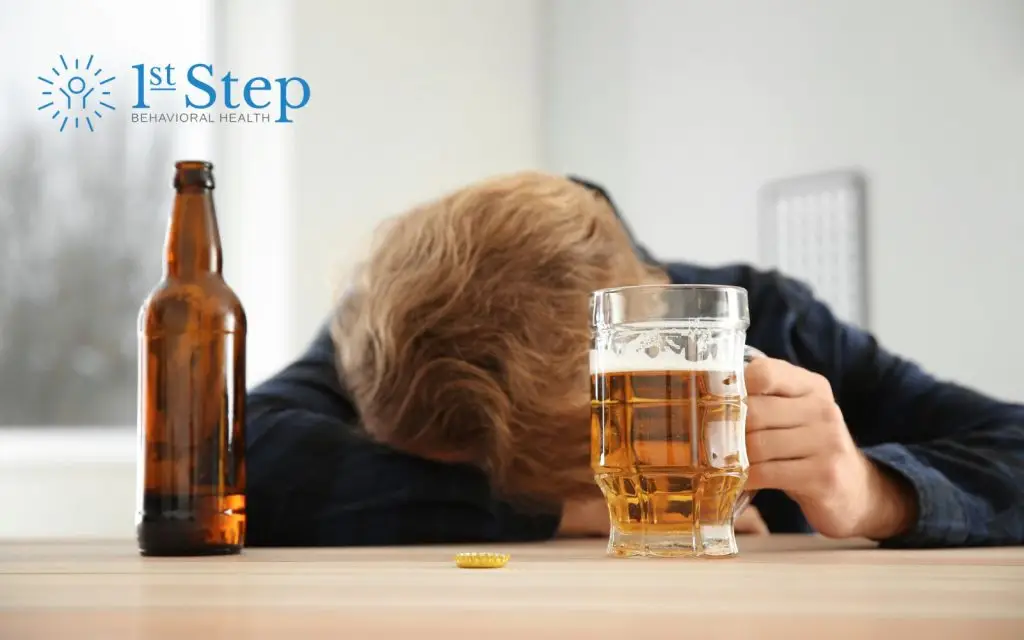Self-destructive behaviors can quietly infiltrate a person’s life, often beginning as a way to cope with painful emotions, stress, or overwhelming trauma. For many people struggling with a mental health condition, these behaviors may feel like the only way to manage complicated feelings, even when they lead to more harm.
Understanding what self-destructive behaviors are, why they develop, and how to reduce them is a vital step toward healing. Whether you’re struggling personally or supporting a loved one, recognizing these patterns can help begin the journey toward emotional well-being and a more fulfilling life.
This article will explore what self-destructive behaviors are, how to manage them, and when to seek treatment.
Defining Self-Destructive Behaviors
Self-destructive behaviors are actions that cause harm to oneself, either physically, emotionally, or socially. They can be obvious, such as physical self-harm or substance abuse, or subtle, like chronic avoidance, self-sabotage, or negative self-talk.
While the intention behind these actions may not always be to hurt oneself, they often lead to emotional distress, broken relationships, and increased mental health challenges.
These behaviors are often symptoms of deeper pain—frequently linked to childhood trauma, unresolved emotional wounds, or ongoing mental health conditions such as borderline personality disorder, depression, or anxiety.
Self-destructive actions come in many forms. Some of the most common include:
- Physical self-harm (cutting, burning, hair pulling)
- Substance abuse or risky substance use
- Suicide attempts
- Self-injury without suicidal intent
- Self-sabotage in relationships, work, or personal goals
- Disordered eating or food restriction
- Negative self-talk and self-pity
- Chronic avoidance of responsibilities or emotions
- Engaging in toxic or abusive relationships
While some of these are obvious forms, others can be subtle and go unnoticed for years. Regardless of how they present, they often result in feelings of shame, guilt, and a profound sense of disconnection from oneself and others.
Why Do People Engage in Self-Destructive Behaviors?
Many people engage in self-destructive behaviors because they don’t have access to healthier coping mechanisms. These behaviors can offer a temporary escape from painful emotions, trauma, or overwhelming stress.
Some common underlying causes include:
- Childhood trauma: Abuse, neglect, or early loss can severely affect a person’s sense of worth and safety.
- Mental health disorders: Conditions like borderline personality disorder, depression, and anxiety can lead to intense emotions, mood swings, and a tendency to harm oneself as a way to cope.
- Unmet emotional needs: When people don’t feel seen, heard, or valued, they may internalize the belief that they’re a bad person or that their needs don’t matter.
- Learned behaviors: Growing up around others who used destructive behaviors to manage stress can normalize these patterns.
- Emotional instability: Difficulty regulating feelings may lead someone to act impulsively, especially when they feel overwhelmed by anger, fear, shame, or sadness.
In these moments, self-destruction may feel like the only way to regain control.
The Role of Self-Talk and Belief Systems
Negative self-talk is one of the most overlooked self-destructive habits. When someone constantly tells themselves they’re worthless, unlovable, or a failure, it reinforces the belief that they don’t deserve better. This inner dialogue can lead to behaviors that reflect those beliefs—further harming one’s mental health and well-being.
Some examples of thoughts that may lead to self-injury include:
- “I ruin everything.”
- “I don’t matter.”
- “I deserve to hurt.”
Thoughts like this can increase the risk of self injury, withdrawal from loved ones, or deliberate self-sabotage in one’s work or relationships.
Recognizing Specific Triggers
Identifying specific triggers is key to interrupting the cycle of self-destruction. These triggers often stem from painful memories, rejection, perceived failure, or overwhelming emotional situations.
Common triggers include:
- Conflict with loved ones
- Criticism or perceived abandonment
- Loneliness or isolation
- Flashbacks of trauma
- High-pressure situations at work or school
Building self-awareness around these triggers helps individuals pause, reflect, and ultimately make healthier choices in the moment.
How to Reduce Self-Destructive Behaviors
Healing is possible. With the proper support, it’s entirely possible to reduce self-destructive behaviors and replace them with healthier coping mechanisms.
Here are some of the steps people can take to reduce self-destructive behaviors.
Develop Self Awareness
Understanding your patterns is the first step. Journaling, mindfulness, or talking with a therapist can help uncover the emotional roots of harmful habits.
Ask yourself:
- What do I feel before I act out?
- What am I hoping to escape?
- How do I feel after I engage in this behavior?
Awareness doesn’t change everything overnight, but it opens the door to intentional healing.
Learn Healthier Coping Skills
Coping skills don’t need to be perfect—they just need to help you ride out difficult emotions without causing more harm. Some healthier coping mechanisms include:
- Physical activity (walking, stretching, dancing)
- Deep breathing or grounding exercises
- Creative outlets (art, music, writing)
- Reaching out to a trusted friend or support person
- Practicing self-compassion and non-judgmental self-talk
These tools help regulate the nervous system and restore a sense of control, even during intense emotional distress.
Engage in Therapy
Professional support makes a significant difference. Talk therapy, such as cognitive behavioral therapy (CBT) or dialectical behavior therapy (DBT), is highly effective in treating self-destructive tendencies, particularly for individuals with personality disorders or a history of self-harm.
Therapy offers:
- A safe space to explore trauma and difficult feelings
- Guidance in learning emotional regulation
- Support in repairing relationships and improving interpersonal safety
- Tools to help break the cycle of self-sabotage
If one approach doesn’t work, don’t give up. Finding the right therapist and modality can lead to lasting transformation.
Build a Support System
Recovery is not a solo journey. Surrounding yourself with supportive, understanding people can help reduce the urge to harm yourself. Whether it’s family, friends, a support group, or a treatment center, connection enables you to feel seen and valued.
Practice Self-Compassion
Healing from self-destructive behaviors isn’t about perfection—it’s about progress. Learning to treat yourself with the same kindness you’d show a friend is essential for long-term healing. Remind yourself:
- “I am doing the best I can with what I know.”
- “My feelings matter.”
- “I deserve love and care.”
Self-compassion helps break down shame, which often fuels destructive cycles.
When to Seek Professional Help
If you or a loved one is engaging in self-injury, dealing with substance abuse, or has made a suicide attempt, it’s critical to seek professional treatment immediately. These behaviors are not just bad habits—they’re signs of deep emotional pain that deserve compassionate care.
Mental health professionals can help with:
- Diagnosing underlying mental health disorders
- Addressing unresolved trauma
- Developing personalized strategies to reduce self-destructive behaviors
- Offering crisis support if there’s an immediate risk of harm
Seek treatment as soon as you recognize the signs of self-injury or other self-destructive behaviors. Getting help early on can lead to faster recoveries and better long-term symptom management.
Final Thoughts
Self-destruction is often a symptom of unhealed pain—not a reflection of who you are. Through self-awareness, therapy, and the development of new coping skills, it’s possible to build a life rooted in connection, emotional safety, and purpose.
You matter. Your pain matters. And your healing matters, too.
If you’re ready to begin the journey toward recovery, contact the team at First Step Behavioral Health to get started. Explore our holistic treatment and support programs or schedule an intake appointment by reaching out to us today.
Frequently Asked Questions (FAQ)
1. Can self-destructive behaviors happen without someone realizing it?
Yes. Many people engage in self-destructive behaviors unconsciously, especially when those behaviors are deeply ingrained habits or were learned in childhood. Subtle forms, such as procrastination, perfectionism, or self-isolation, often go unnoticed but still harm one’s well-being over time.
2. Is self-destruction always linked to trauma?
Not always, but unresolved trauma—especially from childhood—can significantly increase the likelihood of self-destructive patterns. However, some individuals may develop these behaviors due to chronic stress, low self-esteem, or learned coping mechanisms without having a specific trauma history.
3. What’s the difference between self-harm and suicidal behavior?
Self-harm behaviors, such as cutting or burning, are often used as a coping mechanism to relieve emotional pain and are not always linked to a desire to die. Suicidal behavior or a suicide attempt, however, involves the intent to end one’s life. Both are serious and require professional attention, but they stem from different emotional needs and risks.
4. Can someone stop self-destructive behaviors without therapy?
While some individuals can change harmful behaviors through self-help strategies, education, or support from loved ones, therapy significantly increases the likelihood of lasting change. A trained therapist can help uncover the root causes, build emotional resilience, and provide tools that are difficult to develop on one’s own.
5. How can I support a loved one who engages in self-destructive behavior?
Offer non-judgmental support, listen with empathy, and avoid shaming or trying to “fix” them. Encourage professional help without pressuring them. Let them know you care, their pain matters, and they’re not alone. Patience and compassion are key.
6. Are there warning signs that someone is about to engage in self-harm?
Yes, warning signs may include social withdrawal, increased irritability, sudden mood shifts, hiding parts of the body, or expressing feelings of hopelessness. If you notice these signs, gently check in and suggest they speak with a mental health professional.
Sources
Jump to a Section
Call (855) 425-4846
